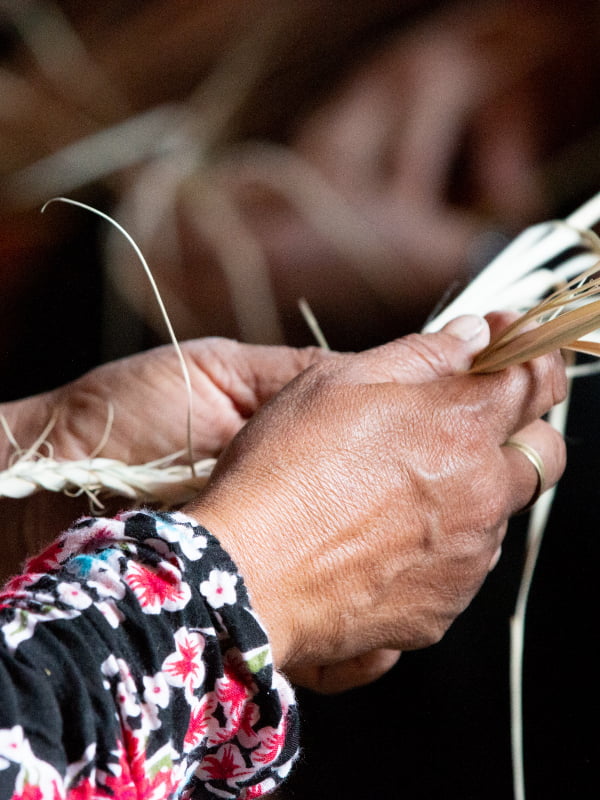New offshore wind farms
Offshore wind is important for the Netherlands. How much do we want to generate? And when would we like to realise new wind farms?
Why is wind energy important?
We would like to be energy independent. And as the Netherlands becomes more sustainable, our electricity consumption will increase. The intention is to use increasingly more and more electricity instead of fossil fuels.
Offshore wind energy provides 'clean’ electricity that reduces CO2 emissions. It is also a reliable source of energy because of strong and constant winds in the Dutch North Sea. That is why we will need a lot of it in the future, because we want to be climate neutral by 2050.
Goals
We have more than achieved our first goal of 4.5 GW in 2023. In total, we had 4.7 GW of offshore wind energy by the end of that year.
Under the current Offshore Wind Energy Roadmap, our goal is to reach 21 GW installed capacity. When we reach the 21 GW goal, Dutch offshore wind farms will supply 16% of the energy we need in the Netherlands. Permits for 5.5 GW of capacity have already been awarded to developers and new wind farms are under construction.
By 2040, we will need between 30-40 GW of offshore wind energy capacity. This will enable us to generate enough energy to meet the Netherlands’ energy consumption needs. This is stated in the North Sea Wind Energy Infrastructure Plan of July 2025.
That is less than the previously expected estimate of 50GW. This is because the transition from fossil fuels to electricity use by, amongst others, industry, is lagging behind. The costs of constructing offshore wind farms have also risen.
You can read more about the North Sea Wind Energy Infrastructure Plan on the page Offshore Energy Infrastructure.
Developments in 2025
Due to rising costs and less demand for electricity than expected, development of offshore wind energy is stalling. We did not receive any applications for the permit for Nederwiek Site I-A. With this the delay is 5 GW.
The Ministry of Climate Policy and Green Growth had anticipated that there might not be any applications. That is why the Minister presented the Offshore Wind Energy Action Plan on 16 September. This contains measures to financially support the construction of new wind farms. The plan also provides solutions to further stimulate demand for offshore wind energy.
You can read more about the action plan in the news item: Action plan supports construction of offshore wind farms.

Offshore Wind Energy Roadmap
The Offshore Wind Energy Roadmap shows where wind farms are located or planned. The table below shows when we will issue a permit for these planned wind farms and when the future developer is likely to put the wind farm into use. Offshore wind farms already under construction are also in the table.
| Installed power | Wind Farm Site (WFS) | Permit procedure | (Expected) commissioning of wind farm |
| 0.76 GW | Hollandse Kust (west) WFS VI | 2022 | 2026-2027 |
| 0.76 GW | Hollandse Kust (west) WFS VII | 2022 | 2027 |
| About 2 GW | IJmuiden Ver WFS Alpha | Q1 2024 | Q3 2029 |
| About 2 GW | IJmuiden Ver WFS Beta | Q1 2024 | Q4 2029 |
| About 1 GW | IJmuiden Ver WFS Gamma-A | To be determined | To be determined |
| About 1 GW | IJmuiden Ver WFS Gamma-B | To be determined | To be determined |
| About 1 GW | Nederwiek WFS I-A | To be determined | To be determined |
| About 1 GW | Nederwiek WFS I-B | To be determined | To be determined |
| About 2 GW | Nederwiek WFS II | To be determined | To be determined |
| About 2 GW | Nederwiek WFS III | To be determined | To be determined |
| About 2 GW | Doordewind WFS I | To be determined | To be determined |
| About 0.7 GW | Ten noorden van de Waddeneilanden WFS I | To be determined | To be determined |
| About 0.7 GW | Hollandse Kust (west) WFS VIII | To be determined | To be determined |
New wind farm zones
Because offshore wind energy will continue to increase after completion of the current Roadmap, we are already looking at new wind farm zones. In these zones, the Government can designate sites for the construction of wind farms after the current Roadmap timeframe. The Government is designating these new wind farm zones in the so-called 'Partial Revision of the North Sea Programme'. This is a supplement to the North Sea Programme 2022-2027. We expect the new Partial Revision at the end of 2025.
The draft Partial Revision is included in the Letter to Parliament dated Friday 18 April. The Government is planning to designate Doordewind (west) Wind Farm Zone and Search area 6/7 as locations for new wind farms.
Public Consultation
The draft Partial Revision of the North Sea Programme 2022-2027 was available for inspection from 12 May to 20 June. We expect a final Partial Revision at the end of 2025.
Plans for offshore energy infrastructure and landfall
There are also plans for offshore energy infrastructure and the landing of wind energy (from sea to land). More information about this can be found on the pages below.
Want to know more?
In the documents below you can read more about the Government's vision for offshore wind energy.
Questions about offshore wind energy?
Email to woz@rvo.nl
- Ministry of Climate Policy and Green Growth



